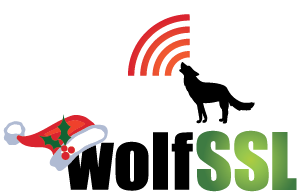Here’s a great article from EE Times on smart utility meter design. Two of the big challenges described in the article are ones that we’ve dealt with before with our current users in the utility space. Securing the meter, and getting updates to the device securely. wolfSSL embedded SSL is a critical component for both design […]
Read MoreMore TagMonth: January 2011
SD Times has a nice cover story on Open Source
Find it here: https://sdtimes.com/back-issues/. To quote the SD Times Editors: “If your organization still maintains the view that open-source software is code written by amateurs, well, it’s time to move on.” We think that sums it up nicely. We can sum up our thinking on open source with a simple statement: Open source is a […]
Read MoreMore TagSecure Firmware Updates with wolfSSL
We believe that in today’s world of connected devices and heightened security concerns, digitally signing the firmware that is loaded onto your embedded or mobile device has become a top priority. One of the reasons that embedded RTOS environments do not include digital signature functionality is because it has historically not been a requirement for […]
Read MoreMore TagCertificate Generation in CyaSSL 1.8.0
With the release of CyaSSL 1.8.0, users are now able to create CA signed x509 v3 certificates. Certificate generation is turned off by default, but may be turned on during the ./configure process with the following option or by defining CYASSL_CERT_GEN in Windows or non-standard environments: –enable-certgen Currently CyaSSL only supports the MD5_WITH_RSA signature algorithm […]
Read MoreMore TagLower Memory Use in wolfSSL 1.8.0
One of the improvements made in wolfSSL 1.8.0 is lower overall memory use through the use of configurable input / output buffer sizes and less dynamic memory use. wolfSSL 1.8.0 uses small static buffers for input and output. They default to 128 bytes and are controlled by the RECORD_SIZE define in cyassl_int.h. If an input […]
Read MoreMore TagThe wolfSSL C Standard Library Abstraction Layer
With the release of wolfSSL 1.8.0 we have made wolfSSL even more portable with the addition of a C Standard Library Abstraction Layer. This means that wolfSSL may now be built without parts of the C Standard Library and user-defined functions may be used instead. The C Standard Library consists of a set of sections of […]
Read MoreMore TagwolfSSL and the Gargoyle Router
One of the community projects which uses wolfSSL is the Gargoyle Router. If you haven`t heard about the Gargoyle Router, it is an interface for small, widely available routers such as the Linksys WRT54G series or the Fonera. Adding additional functionality to the normal router firmware, it is based on the kamikaze release of the […]
Read MoreMore TagKaizen: Continuous Small Improvements Will Yield Large Compound Improvement Over Time
We’re a fan of Ivan Ristic, and suggest you follow his blog at http://blog.ivanristic.com/. We enjoy his work and appreciate his occasional constructive criticism of our work. One of his recent presentations caught our eye. It’s motivating and packed with ideas regarding SSL. Check it out here: http://blog.ivanristic.com/2010/11/stop-complaining-and-solve-a-security-problem-instead.html. We like the title: Stop Complaining and Solve […]
Read MoreMore TagEE Times Picks Top Ten Technologies to Watch in 2011
See their picks here: https://www.eetimes.com/document.asp?doc_id=1258133. We’re keenly interested in Augmented Reality and Automotive Radar for personal reasons. It’s just good and useful stuff that will make our lives better. For business reasons, we’re closely following Personal Power Management, which allows you to see your power consumption in timely (not real timely), but actionable increments. For those […]
Read MoreMore TagResearch Predictions on the Adoption of Smart Appliances
See here http://www.embeddedinternetdesign.com/showArticle.jhtml?articleID=228800856 (as of 26 March 2018 at 9:24am MDT, this link no longer works and has no alternative) for the latest research on the growth and adoption of smart appliances from IMS research.
Read MoreMore Tag
